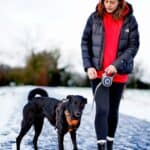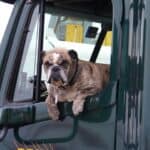
This process, usually accompanied by physiotherapy sessions, massages and more, can be accelerated and improved thanks to a favorable and positive environment.
In everyday life, it is normal for an animal to suffer accidents or experience experiences that compromise its health. Once the problem has been solved, it is time for the dog ‘s rehabilitation, a delicate moment that is dealt with adequately.
This process, usually accompanied by physiotherapy sessions, massages and more, can be accelerated and improved thanks to a favorable and positive environment.
For this reason, it is important that you stay close to your four-legged friend and learn more about dog rehabilitation.
Why is dog rehabilitation necessary?
Rehabilitation or physiotherapy are carried out according to different objectives. It all depends on the condition and situation of the animal.
Most frequent cases
In this list we have summarized the most frequent cases in which these practices are crucial for the recovery of the animal :
- Injury caused by accidents or physical trauma (motor recovery).
- Intervention surgery (relief from pain or inflammation).
- Problems of a neurological or orthopedic nature .
- Atrophy (due to periods of immobility).
- Partial or permanent disability.
- Diseases affecting mobility and walking.
- Loss of muscle mass.
As you have seen, regardless of the cause of the problem affecting a dog, the goal of rehabilitation is always to ensure a better quality of life for your pet.
How does dog rehabilitation work?
By itself, rehabilitation includes a number of sessions that are performed with the periodicity indicated by the specialist . Sessions of varying lengths (half an hour or an hour) may be prescribed one or more times a week .
A key element for the recovery, is definitely the constant c h and allows for gradual but definitive results.
Some techniques are passive, i.e. when the physiotherapist intervenes on the animal’s body. Others are active when the dog has to perform certain exercises or movements.
During the physiotherapy sessions, several maneuvers are performed . For example:
- Active and passive exercises . They are used to activate and strengthen muscles, tendons or bones.
- Cold / heat applications Some therapies consist in alternating the temperature with compresses or baths.
- Massages . The therapeutic benefits of massage are now known which, in dogs, will take into account the physiological or constitutive differences compared to humans.
- Hydrotherapy . The pressure exerted by the water, applied directly or by immersion, offers benefits in some specific cases.
- Other therapies . Some technologies, used with people, have found applications for canine rehabilitation: laser therapy, ultrasound and electrotherapy.
Tips for the rehabilitation of your dog
The following tips will serve as a guide if your pet needs to undergo a rehabilitation program.
These recommendations are important for the success of the process and will help your four- legged friend recover completely .
- Accompany your pet to physiotherapy sessions. The animal will feel safer, less stressed and your company will encourage the exercise.
- Attend all scheduled rehabilitation sessions on time. Missing one or more appointments could put your previous job at risk, with the difficulty of having to start over. This will unnecessarily increase recovery times.
- Seriously perform the techniques you will have to do at home and always check the behavior and habits of the animal. Especially if you notice improvements or worsening of his physical health.
- Respect the medication schedule . Medicines play a vital role in your dog’s recovery and can help make this process quicker and less painful. Also pay close attention to the possible contraindications that could arise precisely in relation to the use of certain medicines.
- Take bans and prohibitions relating to nutrition or certain behaviors literally . Do not take the place of the specialist.
- If in doubt, do not be shy and ask the physiotherapist for any clarification. If you have any doubts, take note because it always pays to be biased about everything.
- Make sure the animal is completely healed or that the rehabilitation program goals have been met. For this it is necessary to attend the last check-up appointment at the vet and listen to the results and confirmation of the state of the animal.
- Show affection and attention to your dog. A happy and motivated pet will go through the rehabilitation process most successfully.
- Avoid stressors and make your best friend feel how important he is to you.
- During rehabilitation, observe that everything is proceeding as it should: food , urination, bowel movements and mood, among others.
By following these recommendations, you will increase the chances of successful dog rehabilitation. No matter what happened before, you must now both work hard for a prompt and full recovery.






